Release time, and expected expected goals
A question for you. Should the player on the ball in the screenshot below A) pass the ball backwards to the supporting player B) turn and play in the teammate on the right C) turn and shoot?
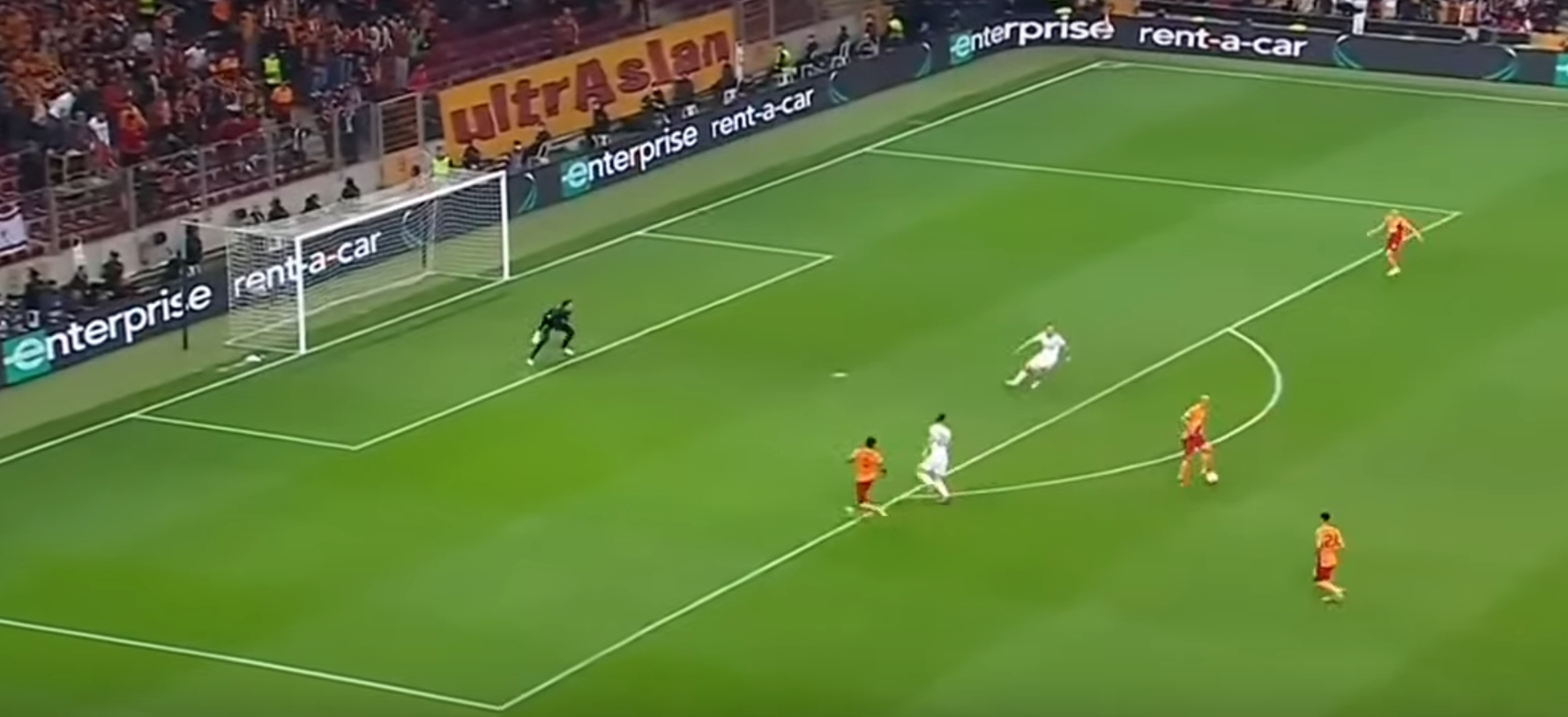 |
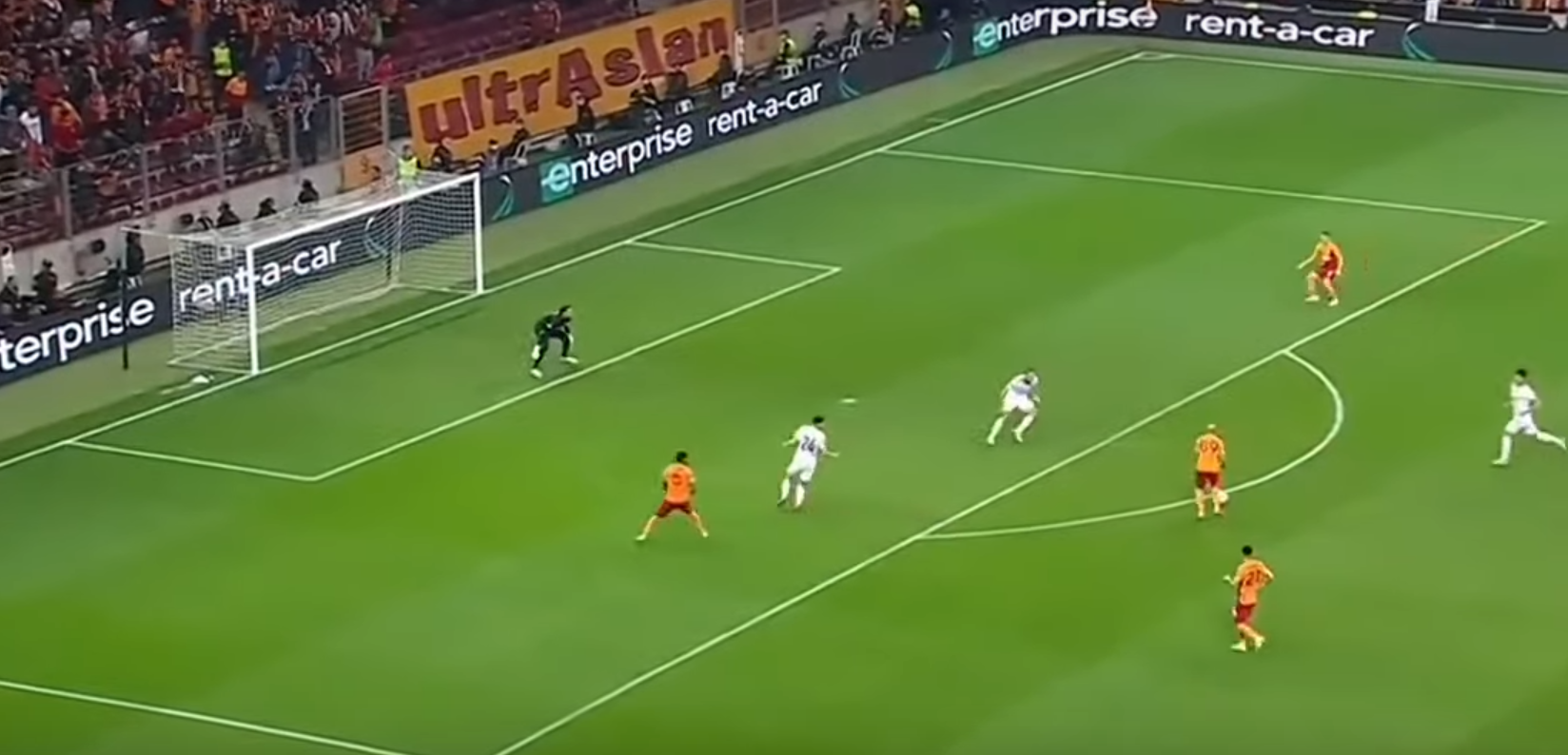 |
Regardless of 'should', what actually happened was this (below)
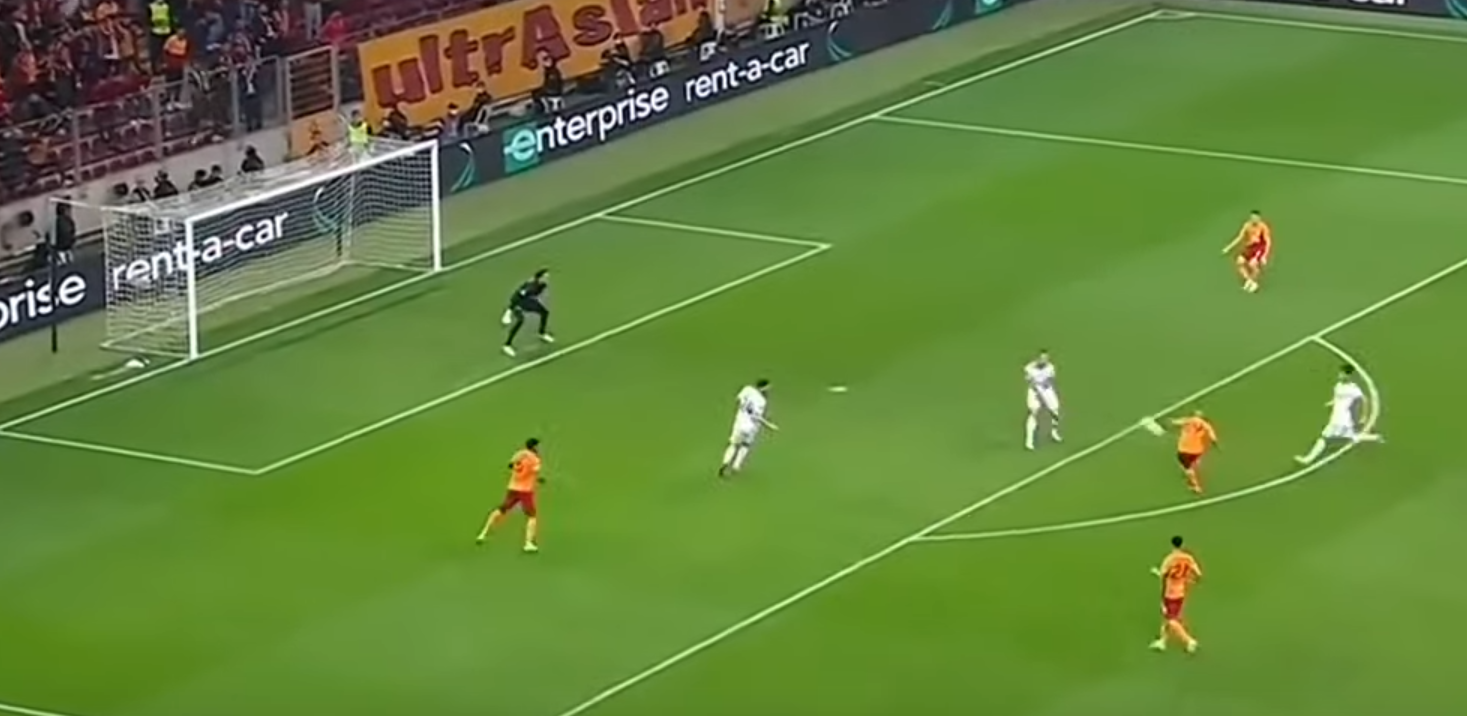 |
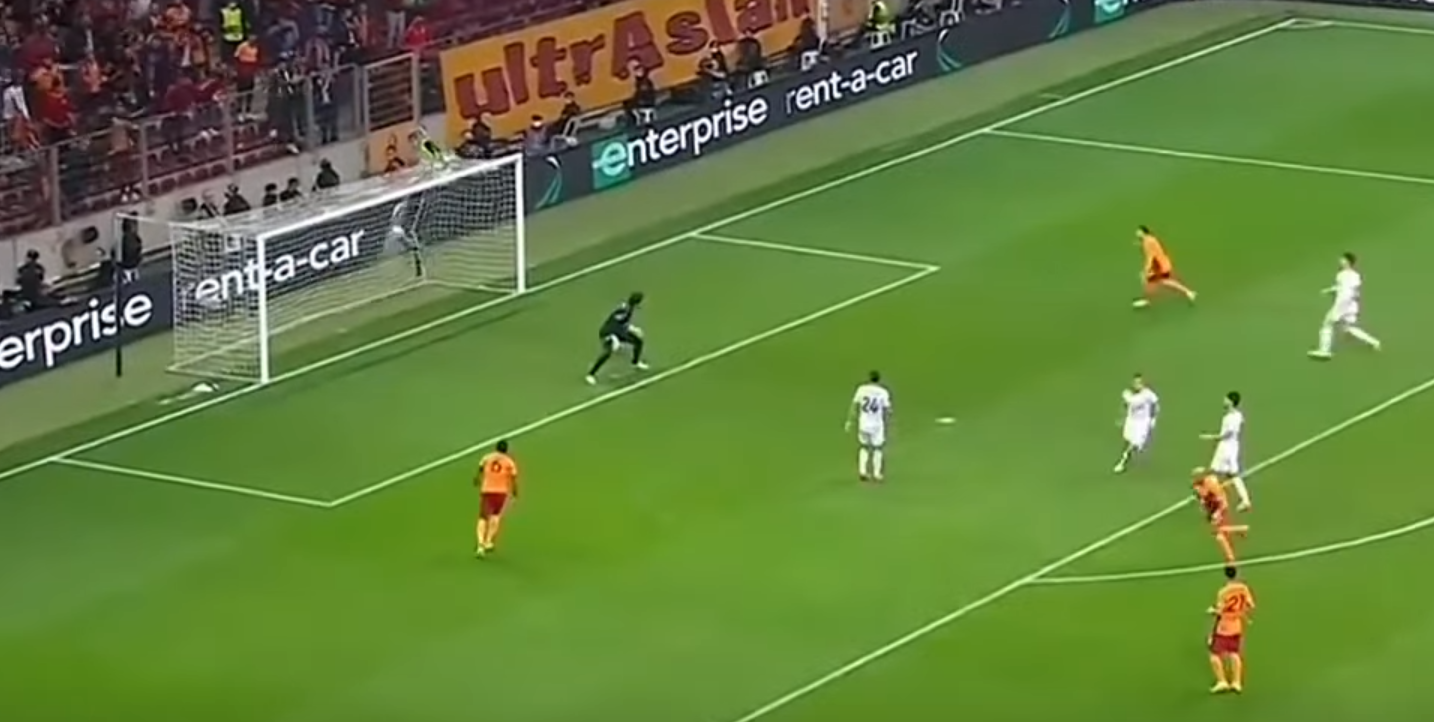 |
It was quite a pretty goal.
If you're familiar with current expected goals models, you'll probably have said that Feghouli should have passed the ball instead of taking his shot. The teammate was closer to goal, and open!
However.
I'm not here to say that Feghouli shouldn't have passed, but by the fact I'm opening the newsletter using it as an example, you might be able to guess that I have a slightly different take on it.
Let us suppose that in the moment below, where Feghouli is facing the goal but hasn't yet started his shooting motion, he decides to pass. I'll mark on the screenshot where I'd say the best place to pass to as a 'first touch' point is for the receiver. The spot would be far enough in front of the player to run onto, allowing them to move centrally with their control of the ball, while hopefully far enough away from opponents to get a clean shot.
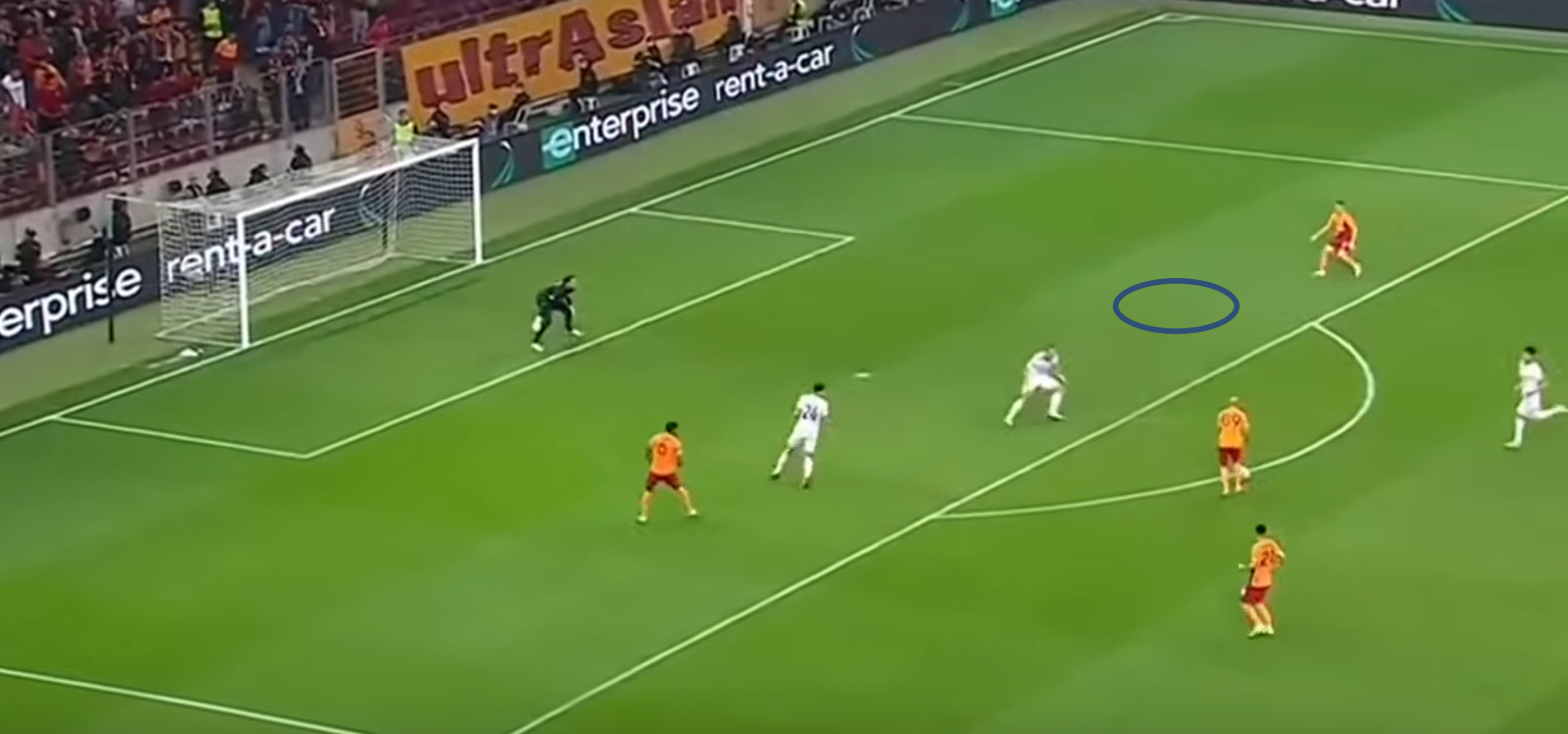 |
However, even if we assume Feghouli executes the pass well, what will the player's touch be like? How much will the goalkeeper and nearest defender be able to re-position themselves in that time? How does the player receiving the ball react to pressure of a defender rushing across in their peripheral vision?
In basketball, 'release time' is something that (I believe) sometimes gets talked about. Assuming they do it all in one motion, how long does it take between a player catching the ball and releasing their shot. This can matter: in such a small court space is important and scarce, while recovering to defend a three-point shot can be relatively easy. Players with quick release times might be able to squeeze out more shots from certain opportunities than players with slower release times. (This isn't an area I know well, so please get in touch if you know more about it).
Football is slightly different: basketball shooters don't have to worry (much) about defenders making contact with them, whereas in football you can shoot first-time. The principle remains though. If you're able to receive, control, and get into your shooting motion quickly, you're going to have a better chance of taking shots and scoring goals.
And that brings us back to Sofiane Feghouli.
If you're familiar with expected goals models, you'll know that there are some things they're (generally) unable to take into account. When you're thinking about alternative options, 'release time' and focus is one of them.
Below is a screenshot of the passage of play we've been looking at which is as close as I can get to (what I think is) the start of Feghouli's shooting motion.
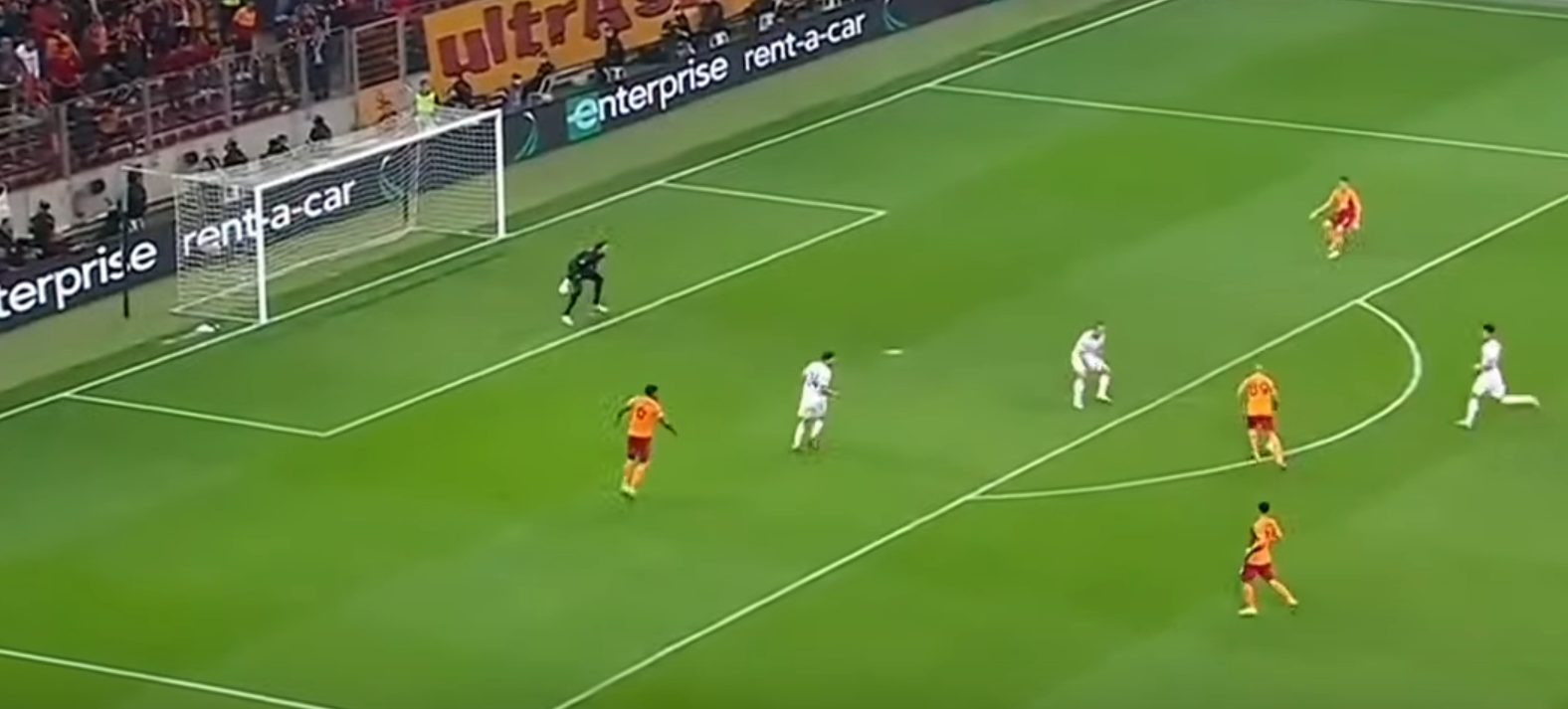 |
The nearest defender about three yards away, and not moving forwards at any particular pace. Feghouli has had time to spot that the goalkeeper is well off his line. Pressure of playing in front of a crowd aside, you could argue that this is as close to a training exercise as a player is going to get.
Now, if Feghouli passes to his teammate, if the teammate needs to take a touch then they'll have a defender storming at them in their peripheral vision. They'll likely need to set their feet a little for the shot before taking it.
Looking at this scenario in isolation, it's not the case that Feghouli's 'shot from 22 yards with a defender between him and goal' would be replaced by 'shot from 18 yards with no defenders between ball and goal'. It's also 'shot from 22 yards with one defender but easily set in shooting motion' vs 'shot from 18 yards with no defenders but (potentially) not set in shooting motion'.
Even if you could measure this, it might not necessarily make much difference to xG values. My intuition says that it would be significant, but not a linear relationship: players seem to have an average 'clean-shooting' level, a 'scuff area' and then their sweet spot area. And sometimes the scuffs (the small scuffs) help more than a sweet strike would. But still, if strong/weak foot would make a difference, this surely would too.
The bigger question is how to measure it in the first place. The simplistic 'release time' could be done with any type of data where you have timestamps for when a player receives the ball and when they shoot. If you wanted to go more in-depth, you could look at their release times in different circumstances, like receiving from their left vs receiving from their right.
(You could potentially do that investigation on data beyond shots -- the way that a player is able to manipulate the ball to make a pass after receiving from their left or right is probably similar to how it looks when they prepare to shoot).
Of course, this data's not going to be easy to come by. Yes, you could use tracking data (if you have it) but shots have small enough sample sizes, let alone shots where this kind of thing is applicable. First-time shots have no notion of 'release time'. (Although the investigation of how well a player is able to sort their feet out for things coming from their left/right might be somewhat transferable).
Clubs could, in theory, create data from their training sessions, although you'd have to figure out how transferable that is to real matches. Although the data being limited to individual teams would reduce its value (no scouting, for example), it could still be used to help in-game decision-making, identifying training opportunities and tracking development.
I've done the writing cardinal sin with this newsletter and not thought of a satisfactory ending for this piece. So I'll end by saying is, despite what this newsletter's title is, please, please do not make 'expected expected goals' a thing. Nobody needs that.
If you enjoyed this, please subscribe and/or tell others about it. And if you have further thoughts on this, get in touch! You can either reply to this email if you're a subscriber, or find me on Twitter @sportsball_mark or @EveryTeam_Mark